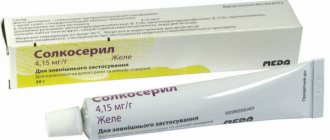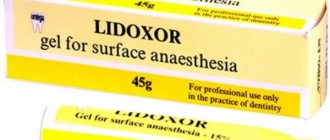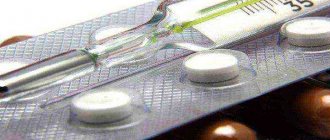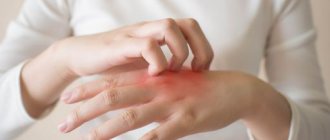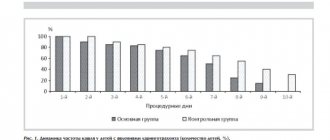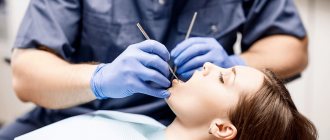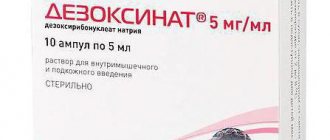What is Solcoseryl ointment used for?
The drug is based on deproteinized dialysate obtained through special processing from the blood of calves. This substance is often used in medicine in countries such as China, Korea, and the entire CIS. It has proven itself to be an effective remedy that can:
- enrich tissue cells damaged due to hypoxia with oxygen and glucose;
- start tissue repair processes;
- activate healthy cell division processes;
- increases the level of energy produced by cells;
- protects the skin from external damage by forming a film on its surface;
- triggers the production of collagen by tissues.
Based on the activity of the drug, the drug can be used for:
- frostbite;
- psoriasis;
- anal ring cracks;
- cuts;
- abrasions;
- scratches;
- bedsores;
- acne marks;
- dermatitis;
First of all, to achieve the best effect, it is necessary to start therapy in the early stages of the problem.
Solcoseryl ointment as a face mask
Cosmetologists claim that the use of Solcoseryl in the early stages of age-related changes allows you to maintain youthful skin. Timely start of use can replace expensive laser rejuvenation in the salon. First of all, Solcoseryl allows you to get rid of wrinkles and prevent their earlier appearance. The ointment is capable of:
- provide adequate nutrition to the facial skin;
- get rid of acne;
- relieve inflammation;
- improve complexion;
- tighten the oval;
- get rid of wrinkles.
The expected effects are possible due to the fact that using a mask allows you to saturate tissues and cells with oxygen and accelerate regeneration. Thanks to the application of the cream, collagen, which is responsible for skin elasticity, begins to be actively produced. The more collagen produced, the fewer wrinkles your skin will have. It is like a support for a heavy skin sheet, preventing its individual areas from falling through, preventing the formation of wrinkles.
Solcoseryl injections: what for
Any surgical intervention is accompanied by a violation of the integrity of the skin and tissues. If the operation involves the removal of some fragment of an internal organ, the body will require a long rehabilitation period, during which the body will be fully or partially restored. Solcoseryl in ampoules can be instantly delivered to tissues, shortening the recovery period. Injections allow you to mobilize all the internal forces of the body to heal wounds, cuts and sutures not only on the outside, but on the internal organs that remain after operations.
Special cases include the prescription of intravenous or intramuscular administration to patients after ophthalmological operations. Solcoseryl ensures active blood circulation, which accelerates the process of adaptation of the organ of vision in the postoperative period, and also reduces the risk of complications.
How to inject Solcoseryl for gastritis
Gastritis is a disease of the gastric mucosa that can occur for various reasons. Solcoseryl ampoules will not become the main drug used in the treatment of gastritis, but it can speed up the healing process, while the prescribed therapy will relieve the patient of the source of the problem.
The gastric mucosa can become inflamed not only as a result of poor nutrition, but also as a result of infection with gastrointestinal infections. The attending physician will first conduct an examination and evaluate the test results, which will allow him to prescribe effective therapy. Solcoseryl will be used as an addition to the main treatment, as it will help the stomach tissues to regenerate faster, ulcers to heal, and inflammation to disappear.
Side effects
The use of an injection solution in rare cases can lead to the development of allergic reactions, including anaphylactic shock. In this situation, you should immediately stop using the drug and prescribe symptomatic therapy in the form of antihistamines.
In addition, the process of performing the injection itself can be painful for the patient due to the potassium it contains.
When using the ointment, some patients may experience a burning sensation at the site of application.
Solcoseryl eye gel may cause short-term irritation, which is not an indication to discontinue treatment. The development of allergic reactions when using external forms of the drug is extremely rare.
Which is better: Metrogyl Denta or Solcoseryl
Both drugs can be used in the treatment of stomatitis. However, it is better to consider them not as drugs of choice, but from the point of view of a combination of two types of gels. The thing is that stomatitis is most often caused by bacterial infection of the tissues of the oral cavity, which causes the appearance of wounds and ulcers. Metrogyl Denta is an antimicrobial drug with a pronounced antibacterial effect. At the same time, everyone who has encountered stomatitis at least once knows how much one wants to speed up the healing process of ulcers that cause severe pain, especially when eating food. Solcoseryl can force tissue to regenerate as quickly as possible, which ensures prompt healing of wounds.
Solcoseryl gel: instructions and application diagram
For Solcoseryl-gel, the instructions for use contain information that the drug has the following types of pharmacological effects when applied to the skin or mucous membrane of the oral cavity - antihypoxic, cytoprotective, regenerating, membrane stabilizing, angioprotective, wound healing (24stoma.ru). In simple terms, this means that the drug has the following properties -
- increases regenerative processes (accelerating tissue regeneration by approximately 30%),
- stimulates collagen synthesis,
- stimulates cell division (reproduction),
- promotes activation of metabolic processes in cells (increases oxygen consumption by cells, and also stimulates the transport of glucose into cells), which allows damaged cells of the body to recover faster.
The use of the gel on the skin and mucous membrane of the oral cavity has several differences. In this regard, below we will separately consider the features of using the gel on the skin and red border of the lips, as well as in the oral cavity. If you wish, you can look at the application specifics in the official instructions (see the link below), but we describe the application patterns in different situations in this article in much more detail.
Solcoseryl gel: official instructions for use ()
Application for treating skin wounds –
Solcoseryl in gel form is intended only for the treatment of fresh, wet wounds, i.e. wounds that have wet discharge. If your wound is already covered with crusts and does not have a wet discharge, you need to use solcoseryl in the form of an ointment. A very important point is that the gel cannot be applied to wounds with purulent discharge (in this case, you first need to have the wound surgically treated by a doctor). In addition, if the wound has torn edges, then surgical treatment is also necessary, without which the wound will quickly fester.
The gel can be applied to wet wounds if the discharged liquid is clear or includes a small amount of blood (i.e., it is “ichor”). But even in these cases, before applying the gel, the wound must be treated with an antiseptic - best using a sterile gauze swab generously moistened with 3% hydrogen peroxide. After antiseptic treatment with another sterile gauze swab, you need to remove excess moisture from the wound and apply a thin layer of gel.
This two-stage treatment should be carried out 2-3 times a day until the wound is covered with granulation tissue and begins to dry out. After this, you need to start using Solcoseryl in the form of an ointment, which is intended specifically for dry wounds on the skin.
Application of gel in the oral cavity –
If you have developed shallow erosions/ulcers due to stomatitis or wearing removable dentures, Solcoseryl gel will be an excellent remedy. If you have a deep ulcer, then it is better to use this drug not in the form of a gel, but Solcoseryl in the form of a dental paste, which, in addition to accelerating healing, also has the function of a protective therapeutic dressing.
You can also use the gel in the mouth 2-3 times a day, making sure to rinse your mouth before using this antiseptic solution. The choice of antiseptic will depend on the cause of the disease. For example, for erosions and ulcers due to herpetic stomatitis, you need to rinse your mouth with a solution of Miramistin, which is active against the herpes virus. In all other cases, it is better to use the antiseptic Chlorhexidine. How to use these antiseptics correctly - see the links below.
After rinsing your mouth, you need to dry the mucous membrane at the site where the gel is applied with a clean, dry gauze swab (in this case, the gel will stick better), and then, without rubbing, simply apply the gel using a clean finger. If we are talking about treating bedsores under prostheses, then immediately after applying the gel you need to put on the prosthesis.
→ Regimen for the use of Chlorhexidine → Regimen for the use of Miramistin
Important: it is advisable to treat the mucous membrane with gel immediately after eating and subsequent oral hygiene. In the absence of good hygiene, a bacterial infection can join wounds and ulcers on the oral mucosa, causing inflammation. After brushing your teeth, you can rinse your mouth with an antiseptic and apply the gel. Next, it is advisable not to eat or rinse your mouth for 2-3 hours; you can drink.
Which is cheaper: Actovegin or Solcoseryl
Actovegin is a complete analogue of Solcoseryl. Its active ingredient is deproteinized calf blood dialysate. The release forms of Actovegin do not differ from those in which Solcoseryl can be found. Tablets and ampoules for intravenous administration are prescribed for the same indications. Actovegin is a prescription drug, like Solcoseryl. Therefore, they can be considered as the same substance, sold under different names. This means that when one of them is not available in the pharmacy, the pharmacist has every right to offer an analogue as a replacement. However, when comparing price categories, Solcoseryl should be given preference, because its cost is lower than Actovegina.
The uniqueness of the composition of solcoseryl
The ointment has a uniform, greasy texture; the color can vary from deep white to yellow, with a characteristic odor of broth and petroleum jelly.
The active components of solcoseryl include deproteinized (removal of proteins) hemoderivat from the blood of 3-month-old calves at a concentration of 2.07 mg/g. Auxiliary components are represented by methyl parahydroxybenzoate and propyl parahydroxybenzoate (preservatives), palmitic alcohol (emulsifier), white petrolatum (ointment base), water for injection (dissolution of dry dialysate).
An analogue of the drug is Actovegin ointment. These drugs appeared on the pharmaceutical market almost simultaneously and differ only in the manufacturer and price.
The main active ingredient of solcoseryl is a deproteinized hemoderivat, which is obtained by dialysis and subsequent ultrafiltration. During the production process, high molecular weight proteins are removed (deproteinization). This is a complex compound that includes natural low-molecular substances with a molecular weight of up to 5000 Da.
Such a unique composition cannot be reproduced in laboratory conditions. Basically, these are electrolytes, amino acids, nucleotides, nucleosides. The effectiveness of only some of these substances has been described and proven from a pharmacological point of view. However, in vitro tests have proven the effectiveness of solcoseryl in the treatment of damaged tissues and wound surfaces.
